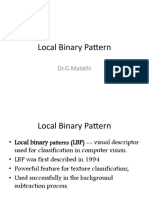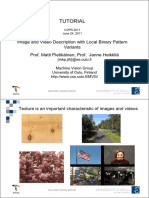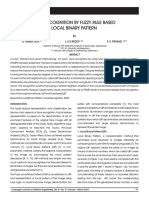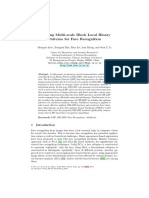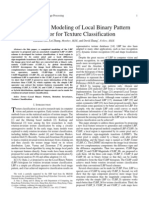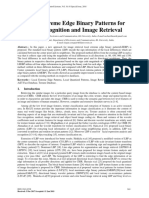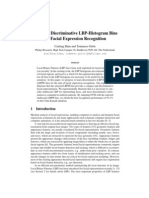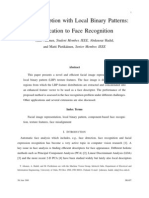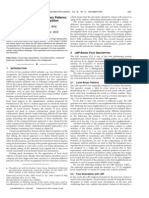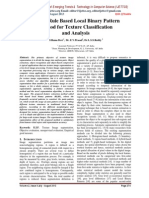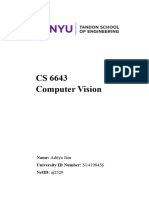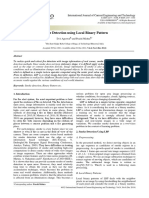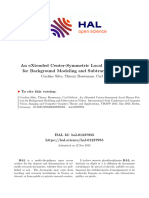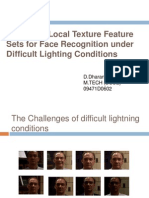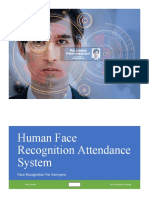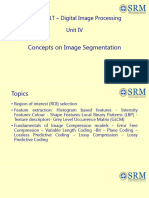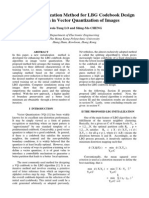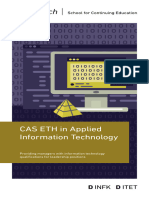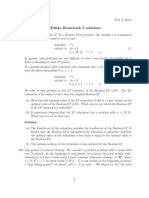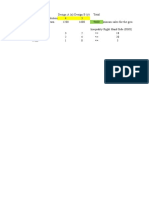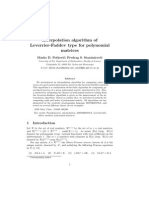0% found this document useful (0 votes)
60 views49 pagesLBP & HoG: Texture and Gradient Analysis
1. Local Binary Patterns (LBP) and Histogram of Oriented Gradients (HoG) are two popular texture descriptors used in computer vision tasks.
2. LBP transforms an image into an array of integer labels describing small-scale texture patterns based on comparing each pixel to neighboring pixels. HoG counts occurrences of gradient orientation in localized portions of an image.
3. Both descriptors have been extended through various techniques to improve properties like rotation invariance, reduce dimensionality, and increase discriminative power for classification. Uniform patterns and rotated LBP as well as weighted histograms and normalization help enhance the descriptors.
Uploaded by
Sayem HasanCopyright
© © All Rights Reserved
We take content rights seriously. If you suspect this is your content, claim it here.
Available Formats
Download as PDF, TXT or read online on Scribd
0% found this document useful (0 votes)
60 views49 pagesLBP & HoG: Texture and Gradient Analysis
1. Local Binary Patterns (LBP) and Histogram of Oriented Gradients (HoG) are two popular texture descriptors used in computer vision tasks.
2. LBP transforms an image into an array of integer labels describing small-scale texture patterns based on comparing each pixel to neighboring pixels. HoG counts occurrences of gradient orientation in localized portions of an image.
3. Both descriptors have been extended through various techniques to improve properties like rotation invariance, reduce dimensionality, and increase discriminative power for classification. Uniform patterns and rotated LBP as well as weighted histograms and normalization help enhance the descriptors.
Uploaded by
Sayem HasanCopyright
© © All Rights Reserved
We take content rights seriously. If you suspect this is your content, claim it here.
Available Formats
Download as PDF, TXT or read online on Scribd
/ 49


